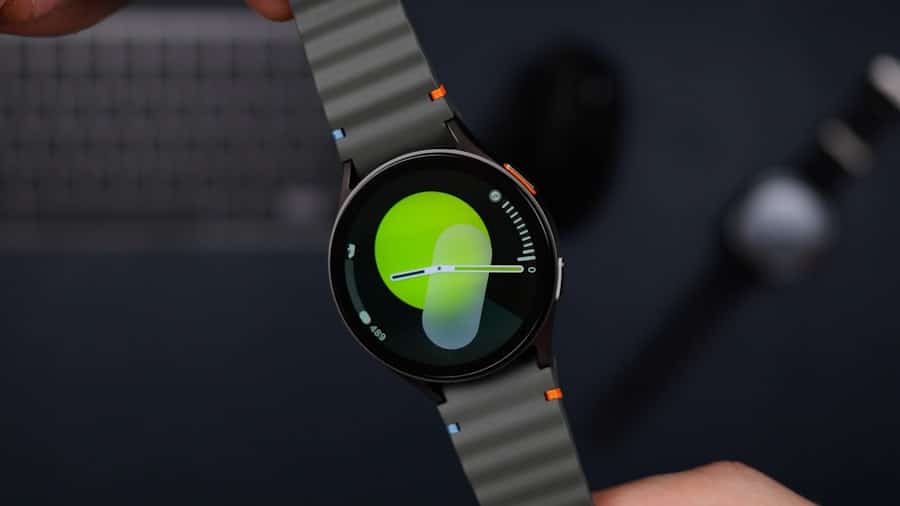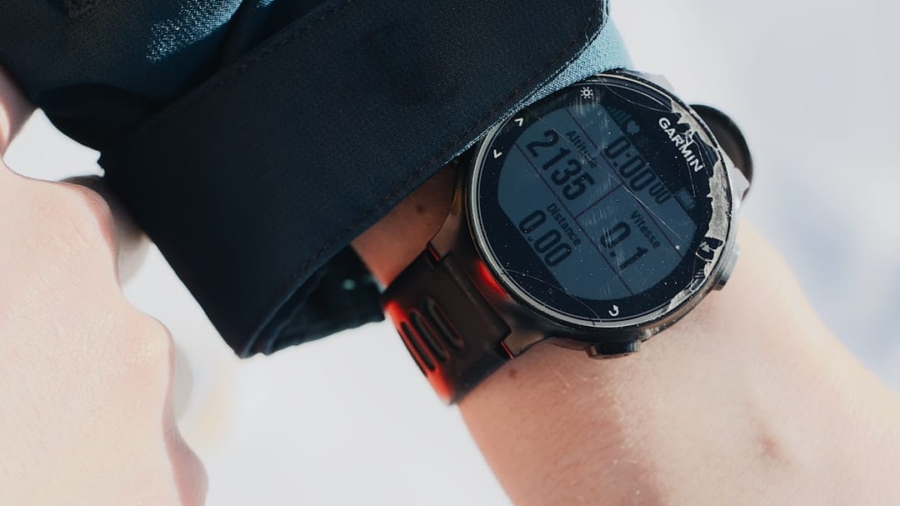Wearable technology has emerged as a transformative force in the realm of personal health and fitness, evolving from rudimentary pedometers to sophisticated devices capable of monitoring a wide array of physiological parameters. These devices, which can be worn on the body like accessories, have gained immense popularity due to their convenience and the wealth of data they provide. The integration of sensors, software, and connectivity has enabled wearables to track everything from heart rate and sleep patterns to physical activity levels and even stress indicators.
As technology continues to advance, the potential applications of wearables are expanding, particularly in the field of health monitoring. The rise of wearable technology is not merely a trend; it represents a significant shift in how individuals engage with their health. With the proliferation of smartphones and the Internet of Things (IoT), wearables have become more accessible and user-friendly.
This accessibility has empowered consumers to take charge of their health, leading to a greater emphasis on preventive care and early detection of health issues. As we delve deeper into the capabilities of wearable technology, it becomes evident that these devices are not just tools for fitness enthusiasts but are also becoming critical in the early detection and management of various health conditions, including neurological disorders.
Key Takeaways
- Wearable technology has become increasingly popular in recent years, with applications ranging from fitness tracking to health monitoring.
- Wearables play a crucial role in health monitoring, allowing individuals to track their vital signs and activity levels in real time.
- Early signs of neurological disorders can often be subtle and difficult to detect, making wearable technology a valuable tool for early detection.
- Wearable devices are being used to detect early signs of neurological disorders by monitoring changes in movement, sleep patterns, and vital signs.
- Examples of wearable devices for neurological disorder detection include smartwatches, fitness trackers, and specialized medical-grade wearables.
The Role of Wearables in Health Monitoring
Early Detection of Health Issues
Smartwatches equipped with heart rate monitors can alert users to irregularities that may indicate underlying cardiovascular issues. This early detection enables individuals to take proactive measures to address potential health problems before they become severe.
Personalized Care Plans
The data collected by wearables can be integrated into broader health management systems, enabling healthcare providers to analyze trends and patterns over time. This integration facilitates personalized care plans tailored to individual needs, leading to more effective health management.
Enhanced Patient Engagement
For example, a patient with diabetes can use a wearable device that tracks glucose levels and physical activity, providing their healthcare team with insights that can inform medication adjustments or lifestyle recommendations. The ability to monitor health metrics in real-time not only enhances patient engagement but also fosters a proactive approach to health management.
Early Signs of Neurological Disorders

Neurological disorders encompass a wide range of conditions that affect the brain, spinal cord, and nerves throughout the body. These disorders can manifest in various ways, including cognitive decline, motor dysfunction, and changes in behavior or mood. Early detection of neurological disorders is crucial for effective intervention and management, as many conditions can progress rapidly if left unaddressed.
Common early signs may include memory lapses, difficulty concentrating, changes in coordination or balance, and alterations in sensory perception. Recognizing these early signs can be challenging, as they often overlap with normal aging or other non-neurological issues. For instance, mild cognitive impairment may be mistaken for typical forgetfulness associated with aging.
Research indicates that early intervention can significantly improve outcomes for individuals with neurological disorders, making it imperative to develop tools that facilitate early detection. This is where wearable technology comes into play, offering innovative solutions to monitor and identify these subtle changes in health status.
How Wearables Are Detecting Early Signs of Neurological Disorders
Wearable technology is increasingly being designed to detect early signs of neurological disorders through advanced sensors and algorithms that analyze user data. These devices can monitor various physiological parameters that may indicate neurological changes. For example, accelerometers and gyroscopes embedded in wearables can track movement patterns and detect abnormalities in gait or balance—key indicators of conditions such as Parkinson’s disease or multiple sclerosis.
Additionally, wearables can assess cognitive function through tasks that require mental engagement. Some devices incorporate cognitive training games or memory tests that track performance over time, providing insights into cognitive decline. By analyzing data trends, healthcare providers can identify deviations from baseline performance that may warrant further investigation.
This proactive approach allows for earlier diagnosis and intervention, potentially slowing disease progression and improving quality of life for patients.
Examples of Wearable Devices for Neurological Disorder Detection
Several innovative wearable devices have been developed specifically for the detection and monitoring of neurological disorders. One notable example is the Empatica Embrace2 smartwatch, which is designed to detect seizures in individuals with epilepsy. This device uses advanced sensors to monitor physiological signals such as heart rate variability and electrodermal activity, alerting caregivers when a seizure is detected.
The ability to provide real-time alerts can be life-saving for individuals at risk of seizures. Another example is the Apple Watch, which has incorporated features aimed at detecting irregular heart rhythms that could indicate atrial fibrillation—a condition that can lead to stroke if left untreated. While primarily focused on cardiovascular health, the watch’s capabilities extend to monitoring physical activity and sleep patterns, which are relevant for assessing overall neurological health.
Benefits of Using Wearables for Early Detection

The benefits of using wearable technology for early detection of neurological disorders are manifold. One significant advantage is the ability to collect continuous data without requiring frequent visits to healthcare facilities. This not only reduces the burden on patients but also allows for more comprehensive monitoring over time.
Continuous data collection enables healthcare providers to observe trends that may not be apparent during sporadic check-ups. Additionally, wearables promote patient engagement by empowering individuals to take an active role in their health management. Users can track their own metrics and receive feedback on their performance, fostering a sense of responsibility towards their well-being.
This engagement can lead to healthier lifestyle choices and adherence to treatment plans. Moreover, the integration of wearables with telehealth platforms allows for remote consultations, making it easier for patients to connect with healthcare professionals without geographical constraints.
Challenges and Limitations of Wearable Technology in Neurological Disorder Detection
Despite the promising potential of wearable technology in detecting neurological disorders, several challenges and limitations must be addressed. One primary concern is the accuracy and reliability of the data collected by these devices. Variability in sensor performance and user compliance can lead to inconsistent results, which may hinder effective diagnosis and treatment decisions.
For instance, if a wearable device fails to accurately capture movement patterns due to improper fit or user error, it could result in missed opportunities for early intervention. Another challenge lies in data privacy and security. As wearables collect sensitive health information, there is an inherent risk associated with data breaches or unauthorized access.
Ensuring robust security measures are in place is essential to protect users’ personal information and maintain trust in these technologies. Additionally, there is a need for standardized protocols regarding data interpretation and clinical integration to ensure that healthcare providers can effectively utilize wearable data in their practice.
The Future of Wearables in Neurological Disorder Detection
The future of wearable technology in detecting neurological disorders holds great promise as advancements continue to unfold at a rapid pace. Innovations in artificial intelligence (AI) and machine learning are expected to enhance the analytical capabilities of wearables, allowing for more sophisticated interpretations of user data. These technologies could enable predictive analytics that identify potential neurological issues before they manifest as clinical symptoms.
Furthermore, ongoing research into biomarker identification may lead to the development of wearables capable of detecting specific physiological changes associated with various neurological conditions. For instance, advancements in neuroimaging techniques combined with wearable sensors could provide insights into brain activity patterns linked to disorders such as Alzheimer’s disease or schizophrenia. As collaboration between technology developers, healthcare providers, and researchers continues to grow, we may see an increase in personalized wearable solutions tailored to individual needs.
This evolution could lead to more effective monitoring strategies that not only enhance early detection but also improve overall patient outcomes through timely interventions and personalized care plans. The integration of wearables into everyday life has the potential to revolutionize how we approach neurological health management, paving the way for a future where early detection becomes the norm rather than the exception.
A related article discussing the best VPS hosting providers for 2023 can be found here. This article explores how wearables are revolutionizing the detection of early signs of neurological disorders. By utilizing advanced technology and data analysis, wearables are able to monitor subtle changes in a person’s movements and behaviors that may indicate the presence of a neurological disorder. This innovative approach to healthcare is paving the way for earlier diagnosis and intervention, ultimately improving patient outcomes and quality of life.
FAQs
What are wearables?
Wearables are electronic devices that can be worn on the body as accessories or implants. They are designed to perform a specific function and are often used for tracking health and fitness data.
What are neurological disorders?
Neurological disorders are diseases of the central and peripheral nervous system. They can affect the brain, spinal cord, nerves, and muscles, leading to a wide range of symptoms including movement problems, seizures, and cognitive impairment.
How are wearables detecting early signs of neurological disorders?
Wearables are equipped with sensors that can track various physiological parameters such as heart rate, sleep patterns, and movement. By analyzing this data over time, wearables can detect subtle changes that may indicate early signs of neurological disorders.
What are the benefits of using wearables for early detection of neurological disorders?
Using wearables for early detection of neurological disorders can lead to earlier diagnosis and intervention, which can improve patient outcomes. It can also provide valuable data for researchers studying these disorders.
What are some examples of wearables being used to detect early signs of neurological disorders?
Examples of wearables being used for early detection of neurological disorders include smartwatches that track movement patterns to detect early signs of Parkinson’s disease, and head-mounted devices that monitor brain activity to detect early signs of epilepsy.
Are there any limitations to using wearables for detecting early signs of neurological disorders?
While wearables show promise for early detection of neurological disorders, there are limitations to consider. These include the accuracy of the sensors, the need for validation studies, and the potential for false positives or negatives.

